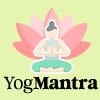Last Updated:
Dr. Nibedita from Arogyadhama Holistic Health Centre recommends Parvatasana, Sarvangasana, and Bhujangasana to combat lethargy, improve circulation, and enhance mental focus.
The mountain pose works as an effective ignition for the body. (Image: Shutterstock)
Are you suffering from springtime lethargy or depression? Or perhaps you need some kickstart to come out of your comfort zone? You could even be a young procrastinating adult – or someone who habitually exists in sedentary mode. Whatever be your reason, if you think you could do with a dose of dynamism in general, Yoga has some great poses for you.
The word in Yoga for lethargy is Tamas. A tamasic body and mind is sluggish, inertial, and often given to wrong thinking, wrong choices and wrong actions. Moving the body channelises energy and activates the mind. However, any exercise won’t do – we want the solution to be sure-shot, sustained, and have all-round benefits. Dr Nibedita, KS Medical Director, Arogyadhama Holistic Health Centre, SVYASA, Bengaluru recommends the addition of a certain sequence to your daily exercise regimen that can help, which consists of Parvatasana, Sarvangasana and Bhujangasana (Bhujangasana can be substituted with Sarpasana). This sequence can stimulate the body to action, while also relaxing the spine. “Unusual body posture makes us feel alert and focussed. Besides, in all of these poses, the hands take the body weight and the hands as we know are the karmendriyas, or tools for action. So, tamas or inertia towards activity gets rectified and we move to a state of activity or Rajas,” she says.
“At the subtle level, tamas resides at the muladhara chakra; so, when we go up to stimulate the upper body, we are moving away from tamas, and kundalini is awakened right up to the Sahasrara chakra. These asanas manipulate the spine. Another very important factor is improved circulation,” she adds.
Following this sequence of dynamic asanas yields an energetic body and mind, free from sloth.
PARVATASANA – MOUNTAIN POSE IN STANDING POSITION
Why it helps:
Begin with Parvatasana. This pose works as an effective ignition for the body. The spine remains straight, and the activity is in the downward direction, which is relaxing for the spine. The centre of gravity, which falls on the lumbar region in the normal course, is balanced. The palms and soles bear the body’s weight, so the weight is distributed.
The pose literally gives strength and stability of a mountain. All muscles from the fingers, wrists, and through the biceps, triceps and the shoulders get involved and get strengthened. At the other end, too, the heels, calves, thigh muscles, hips and pelvic area get strengthened. The back gets a stretch, spinal nerves are toned and the whole nervous system is invigorated. Abdominal organs get toned.
Parvatasana makes one focussed and alert. With increased blood supply to the head, the brain is stimulated. It improves not just the physical sense of balance but also mental balance.
The Steps:
- On a mat, get on to all fours into a tabletop position.
- Lift your knees off the ground, and pull the hips back up.
- Your body now looks like a mountain top. Keep the hands stable and spread the fingers out firmly on the ground. The spine should remain straight from the base to the head.
- Stay in the pose for a few seconds, breathing normally.
- Return to the starting position.
- Repeat three times.
BHUJANGASANA (OR SARPASANA) – COBRA POSE (OR SNAKE POSE)
Why it helps:
It is a prone (lying-on-the-belly) posture, an unusual position. The palms and feet carry the body weight and the biceps and triceps are also in active use, so there is no chance of being lazy or lethargic. There is proper oxygenation because the chest is expanded. The movements stimulate the nerves and muscles around the spine and as well as the adrenal glands. All of this also contributes to reduced anxiety and stress.
The Steps:
- Lie on your stomach, hands bent at the elbows and palms kept near the shoulders, facing downward.
- Inhaling, raise the head and neck upwards to look at the ceiling. Ensure that the abdomen below the navel does not get lifted.
- Stay there for a few seconds.
- Exhaling, bring your body, neck and head back to the floor.
- Relax for a few seconds in Makarasana (Crocodile pose), resting the head on both palms.
- Do five rounds of this.
SARVANGASANA – THE SHOULDER STAND
Why it helps:
This is an upside-down posture, an inversion. We are directing our blood flow to the head; the lymphatic drainage is better. Further, the nervous system – that which is responsible for us feeling lethargic – is activated and so, mental sluggishness, depression and insomnia are relieved. Here, we keep the lower extremities out of the way and stimulate the upper body instead.
The Steps:
- Lie down on your back, feet together and hands by the sides.
- Exhaling, fold the legs and raise them slightly. With hands supporting the hips, push the legs to take them as far up as possible. Balance the entire body weight upon the arms, elbows, neck and shoulders, while moving the hands slightly now, to hold at the waist.
- Maintain this final pose as long as comfortable, with normal breathing.
- Inhaling, return to the starting position by lowering the hips and releasing the hands.
Note: This article is for information and the poses are indicative. Always learn Yoga poses in person from an experienced Yoga teacher first. Check with your physician before attempting any new pose or exercise regime, and never exceed your capacity. Always keep in mind your individual limitations.
The author is a journalist, cancer survivor and certified yoga teacher. She can be reached at swatikamal@gmail.com.








